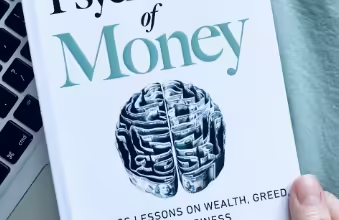7 Books That Changed How Americans Think About Money
Discover these 7 books that changed Americans' view of money.
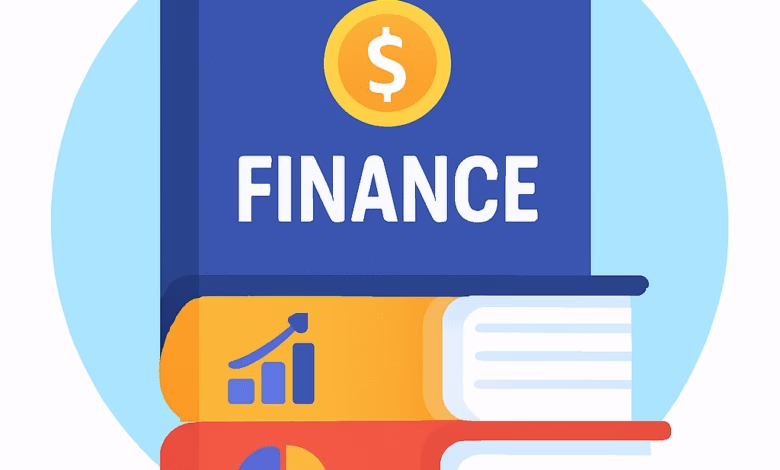
Money is a fundamental part of modern life, yet for generations, the principles of personal finance were often treated as a niche subject, reserved for bankers and academics. The average American was left to navigate the complex worlds of saving, investing, and debt with little more than inherited wisdom and gut feelings. That all changed with a series of revolutionary books that tore down the walls of financial opacity, empowering millions to take control of their economic destinies.
These are not just dry textbooks filled with charts and figures. They are powerful manifestos that have fundamentally reshaped our national conversation about wealth, retirement, and the very meaning of work. They introduced radical ideas that are now commonplace: that you don’t need a high income to become a millionaire, that passive investing can outperform active stock picking, and that achieving financial independence decades before traditional retirement age is a tangible goal.
This article explores seven of the most influential books that have sparked financial revolutions in households across the country. We’ll delve into their core philosophies, unpack their lasting impact, and understand why they continue to be essential reading for anyone looking to build a secure and prosperous future.
1. The Intelligent Investor by Benjamin Graham
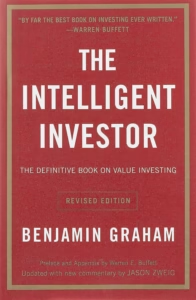
The Timeless Blueprint for Value Investing
First published in 1949, “The Intelligent Investor” is widely regarded as the bible of value investing. Benjamin Graham, a revered economist and professional investor, laid out a disciplined and risk-averse framework for investing that has influenced generations of the world’s most successful financiers, most notably his student, Warren Buffett. In an era dominated by speculation and market timing, Graham’s work was a revolutionary call for logic, research, and emotional control.
The book’s central thesis is the distinction between an “investor” and a “speculator.” An investor, according to Graham, is one who, “through thorough analysis, promises safety of principal and an adequate return.” Anyone who doesn’t meet this criterion is a speculator, essentially gambling on price movements.
Core Concepts and Lasting Impact
Graham introduced several groundbreaking concepts that have become pillars of modern investment strategy.
- Mr. Market Allegory: To explain the irrational mood swings of the stock market, Graham created the character of Mr. Market, a manic-depressive business partner who offers to buy your shares or sell you his at wildly different prices each day. The intelligent investor doesn’t get swayed by Mr. Market’s emotional state but instead uses his irrationality, buying when he is pessimistic (and prices are low) and selling when he is euphoric (and prices are high). This simple yet profound allegory taught Americans to view market volatility as an opportunity, not a threat.
- Margin of Safety: This is perhaps Graham’s most critical contribution. The margin of safety is the principle of buying a security at a significant discount to its intrinsic value. This discount provides a buffer against errors in judgment and the inevitable downturns of the market. It’s a defensive strategy that prioritizes the preservation of capital above all else, a stark contrast to the high-risk, high-return mentality often glamorized.
- Focus on Business Fundamentals: Graham shifted the focus from chasing hot stocks to analyzing the underlying business. He taught investors to be business analysts, to scrutinize financial statements, management quality, and long-term earning power. This approach transformed investing from a guessing game into a disciplined, research-driven enterprise.
“The Intelligent Investor” fundamentally changed how serious investors approach the market. It replaced frantic speculation with a calm, methodical process, proving that long-term success comes from discipline and rationality, not from trying to predict the unpredictable.
2. A Random Walk Down Wall Street by Burton Malkiel
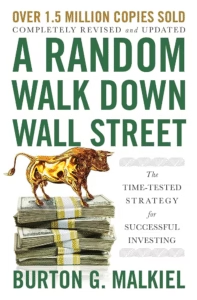
Championing the Power of Passive Investing
If Graham taught Americans how to think like business owners, Burton Malkiel, a Princeton economist, taught them that trying to outsmart the market might be a fool’s errand. First published in 1973, “A Random Walk Down Wall Street” brought the “efficient-market hypothesis” from the halls of academia to the mainstream investor.
Malkiel’s central argument is that stock market prices are largely unpredictable. He posits that the market is so efficient at processing new information that a “blindfolded monkey throwing darts at a newspaper’s financial pages could select a portfolio that would do just as well as one carefully selected by the experts.” This was a direct challenge to the entire industry of professional stock pickers and actively managed mutual funds.
Core Concepts and Lasting Impact
Malkiel’s work democratized investing by offering a simple, effective, and low-cost alternative to the often-intimidating world of stock analysis.
- The Rise of the Index Fund: The logical conclusion of the random walk theory is that if you can’t beat the market, you should simply buy the market. Malkiel was a powerful advocate for buying and holding a diversified portfolio of all the stocks in a broad market index, such as the S&P 500. This idea paved the way for the creation and popularization of the index fund, most famously championed by John C. Bogle of Vanguard.
- Understanding Risk and Diversification: The book provides one of the clearest explanations of risk and the importance of diversification. Malkiel demonstrates how holding a wide variety of assets can reduce portfolio volatility without necessarily sacrificing returns. He made these core principles of modern portfolio theory accessible to the average person.
- A Critique of Wall Street: Malkiel pulled back the curtain on the high fees and often mediocre performance of the active investment management industry. He empowered individual investors to question whether they were getting value for the fees they were paying, leading to a massive shift of capital from expensive, actively managed funds to low-cost index funds and ETFs over the subsequent decades.
“A Random Walk Down Wall Street” gave millions of Americans the confidence to become investors. It showed them that they didn’t need to be experts to build wealth; they just needed discipline, diversification, and a long-term perspective.
3. Your Money or Your Life by Vicki Robin and Joe Dominguez
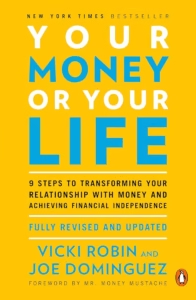
Redefining Wealth and Pioneering the FIRE Movement
Published in 1992, “Your Money or Your Life” was a radical departure from traditional finance books. It wasn’t just about accumulating more money; it was about questioning the very nature of work and consumption. Vicki Robin and Joe Dominguez proposed a revolutionary idea: what if you could escape the “rat race” and achieve a state of complete financial independence, where work becomes optional?
The book introduced a nine-step program to transform your relationship with money. It frames money not in terms of dollars, but in terms of “life energy”—the hours of your life you trade for income. This simple reframing forces the reader to evaluate every expense in terms of the life energy required to pay for it.
Core Concepts and Lasting Impact
“Your Money or Your Life” became the foundational text for the Financial Independence, Retire Early (FIRE) movement, a subculture of individuals dedicated to extreme saving and investing to retire decades earlier than the norm.
- Calculating Your Real Hourly Wage: The book guides readers through a powerful exercise to calculate their real hourly wage by factoring in all work-related costs, such as commuting, work attire, and stress-related expenses. Most people are shocked to discover how little they are actually earning per hour of their life energy.
- The Crossover Point: The ultimate goal of the program is to reach the “crossover point,” the moment when the monthly income from your investments exceeds your monthly expenses. Reaching this point signifies that you have achieved financial independence and are no longer required to work for money. This provided a tangible, mathematical goal for a concept that had previously seemed abstract.
- Conscious Spending: The book is not about deprivation but about aligning your spending with your values. By tracking every penny and evaluating expenses in terms of life energy, readers naturally begin to eliminate frivolous spending and focus their resources on what truly brings them fulfillment.
“Your Money or Your Life” changed the American dream from one of high consumption to one of personal freedom and intentionality. It gave a generation permission to opt out of the traditional career path and design a life based on their own values, not societal expectations.
4. Rich Dad Poor Dad by Robert T. Kiyosaki
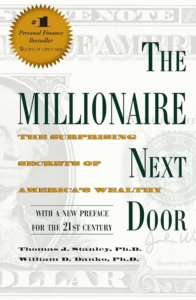
The Mindset Shift from Employee to Investor
“Rich Dad Poor Dad,” published in 1997, is one of the best-selling personal finance books of all time, largely because it tells a compelling story. Robert Kiyosaki contrasts the financial philosophies of his two “dads”: his highly educated but financially struggling biological father (Poor Dad) and the financially astute father of his best friend (Rich Dad).
The book’s power lies in its challenge to conventional wisdom about work and money. “Poor Dad” followed the standard script: go to a good school, get a safe job, and climb the corporate ladder. “Rich Dad” understood that the path to true wealth lies not in your salary, but in your ability to acquire income-generating assets.
Core Concepts and Lasting Impact
Kiyosaki’s book was a wake-up call for millions trapped in the “employee” mindset.
- Assets vs. Liabilities: The book’s most famous lesson is the simple yet profound distinction between an asset and a liability. “An asset puts money in your pocket. A liability takes money out of your pocket.” Kiyosaki controversially argued that for many Americans, their primary residence is a liability, not an asset, forcing a re-evaluation of the traditional view of homeownership as the ultimate financial goal.
- The Importance of Financial Literacy: “Rich Dad Poor Dad” is a passionate argument for financial education, which Kiyosaki argues is deliberately neglected by the formal education system. He encourages readers to learn the language of money—accounting, investing, and market dynamics—to build their own financial intelligence.
- Mind Your Own Business: Kiyosaki advises readers that their profession is different from their business. Your profession is what pays the bills, but your business is your asset column. He urges people to spend their time and money acquiring assets like real estate, stocks, and intellectual property that will generate passive income.
While controversial for its anecdotal nature and simplified financial advice, “Rich Dad Poor Dad” was revolutionary in shifting the American mindset from a focus on income to a focus on assets. It inspired a new generation of entrepreneurs and real estate investors to think outside the box of traditional employment.
5. The Total Money Makeover by Dave Ramsey
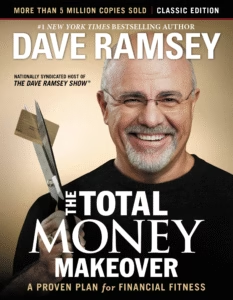
A Practical, No-Nonsense Plan to Get Out of Debt
By the early 2000s, American consumer debt was skyrocketing. Into this crisis stepped Dave Ramsey, a radio host whose own story of building a fortune, losing it all, and rebuilding it again gave him a unique platform. His 2003 book, “The Total Money Makeover,” provided a simple, straightforward, and highly motivational plan for digging out of debt and building wealth.
Ramsey’s approach is less about complex financial theory and more about behavioral change. He recognizes that personal finance is “80% behavior and only 20% head knowledge.” His plan is designed to create momentum and quick wins to keep people motivated on their journey.
Core Concepts and Lasting Impact
Ramsey’s “Baby Steps” have become a household name and have helped millions of families clean up their financial messes.
- The 7 Baby Steps: The core of the book is a sequential plan:
- Save a $1,000 beginner emergency fund.
- Pay off all debt (except the house) using the “debt snowball” method.
- Save 3-6 months of expenses in a fully funded emergency fund.
- Invest 15% of your household income for retirement.
- Save for your children’s college funds.
- Pay off your home early.
- Build wealth and give generously.
- The Debt Snowball: Ramsey’s most famous—and debated—technique is the debt snowball. He advises people to list their debts from smallest to largest, regardless of interest rate, and pay them off in that order. The psychological victory of quickly eliminating the smallest debts provides the motivation to tackle the larger ones. This behavior-focused approach proved incredibly effective for people who felt overwhelmed.
- A “Gazelle Intense” Mindset: Ramsey preaches a message of focused intensity, encouraging readers to cut their lifestyle to the bone, take on extra jobs, and throw every available dollar at their debt. This “scorched earth” approach resonated with people who were tired of being in financial bondage.
“The Total Money Makeover” provided a clear, actionable, and hope-filled path for Americans drowning in debt. It created a massive grassroots movement and proved that a simple, disciplined plan, executed with intensity, could lead to financial peace.
6. I Will Teach You to Be Rich by Ramit Sethi
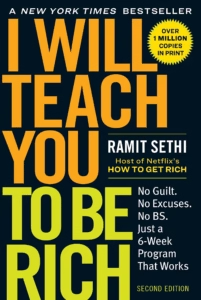
Automating Wealth for the Modern Young Adult
Appearing on the scene in 2009, Ramit Sethi’s “I Will Teach You to Be Rich” spoke to a new generation: millennials who were tech-savvy, skeptical of traditional financial advice, and looking for practical, automated solutions. Sethi’s tone is irreverent, humorous, and refreshingly direct. He rejects the deprivation mindset of many finance gurus, instead focusing on “conscious spending” and building a “rich life” that is defined by the individual.
The book’s core philosophy is to automate the fundamentals of personal finance—saving, investing, and paying bills—so you can spend your time and energy on things you truly value. It’s a six-week program designed to be set up once and then run in the background.
Core Concepts and Lasting Impact
Sethi modernized personal finance by integrating it with technology and behavioral psychology.
- Automation is Key: Sethi provides a detailed blueprint for setting up a system of linked bank and investment accounts that automatically directs your paycheck where it needs to go. A portion goes to fixed costs, a portion to investments, a portion to savings goals, and the rest is left as guilt-free spending money. This system eliminates the need for constant budgeting and willpower.
- Focus on the “Big Wins”: Unlike gurus who preach cutting out lattes, Sethi encourages readers to focus on the “Big Wins”—optimizing their credit, negotiating their salary, and automating their investments. He argues that getting these five to ten things right has a far greater impact than obsessing over minor expenses.
- Conscious Spending: Sethi advocates for spending extravagantly on the things you love, as long as you cut costs mercilessly on the things you don’t. This approach empowers readers to design their own version of a rich life, whether that includes frequent travel, expensive hobbies, or fine dining, all within a sound financial framework.
“I Will Teach You to Be Rich” made personal finance cool, accessible, and actionable for a new generation. It demonstrated that building wealth doesn’t have to be about restriction and spreadsheets; it can be a seamless, automated part of a rich and fulfilling life.
7. The Simple Path to Wealth by JL Collins
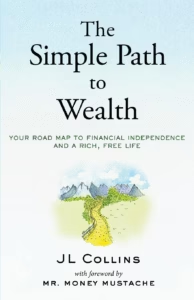
The Ultimate Guide to Financial Simplicity and Index Investing
What began as a series of letters to his daughter evolved into one of the most beloved and straightforward investing books of the modern era. Published in 2016, JL Collins’ “The Simple Path to Wealth” takes the core ideas of Graham and Malkiel and distills them into their simplest, most actionable form.
The book is a powerful antidote to the complexity and fear that paralyzes many would-be investors. Collins’s message is refreshingly clear: spend less than you earn, invest the surplus in low-cost, broad-based index funds, and avoid debt like the plague.
Core Concepts and Lasting Impact
Collins has become a hero within the FIRE movement for his ability to explain complex topics with clarity and conviction.
- F-You Money: Collins champions the concept of “F-You Money”—having enough financial resources to walk away from any situation, whether it’s a toxic job, a bad relationship, or a demanding boss. This reframes the goal of investing from mere retirement to one of ultimate personal freedom and control.
- The Power of VTSAX: The book is famous for its simple, powerful investment strategy: invest in a single, low-cost total stock market index fund, specifically Vanguard’s VTSAX. While he discusses other portfolio allocations, his core argument is that for most people, this simple approach is all that is needed to build substantial wealth over the long term.
- Navigating Market Volatility: Collins provides one of the best explanations of why investors should remain steadfast during market crashes. He argues that a market downturn is simply a “sale” on stocks, presenting a massive opportunity for those who are regularly investing to buy more shares at a lower price. His calm, long-term perspective is a powerful anchor during periods of financial panic.
“The Simple Path to Wealth” has become the definitive guide for a new generation of hands-off investors. It strips away the noise and complexity of the financial industry, offering a clear, simple, and proven path to financial independence.
Your Financial Education is in Your Hands
These seven books represent more than just financial advice; they are a chronicle of our evolving understanding of money. From the disciplined, analytical approach of Benjamin Graham to the radical simplicity of JL Collins, each author provided a new lens through which Americans could view their financial lives. They democratized knowledge, challenged the status quo, and empowered millions to build wealth, find freedom, and live richer, more intentional lives. Your journey starts with the decision to learn, and there is no better place to begin than the pages of these revolutionary works.




